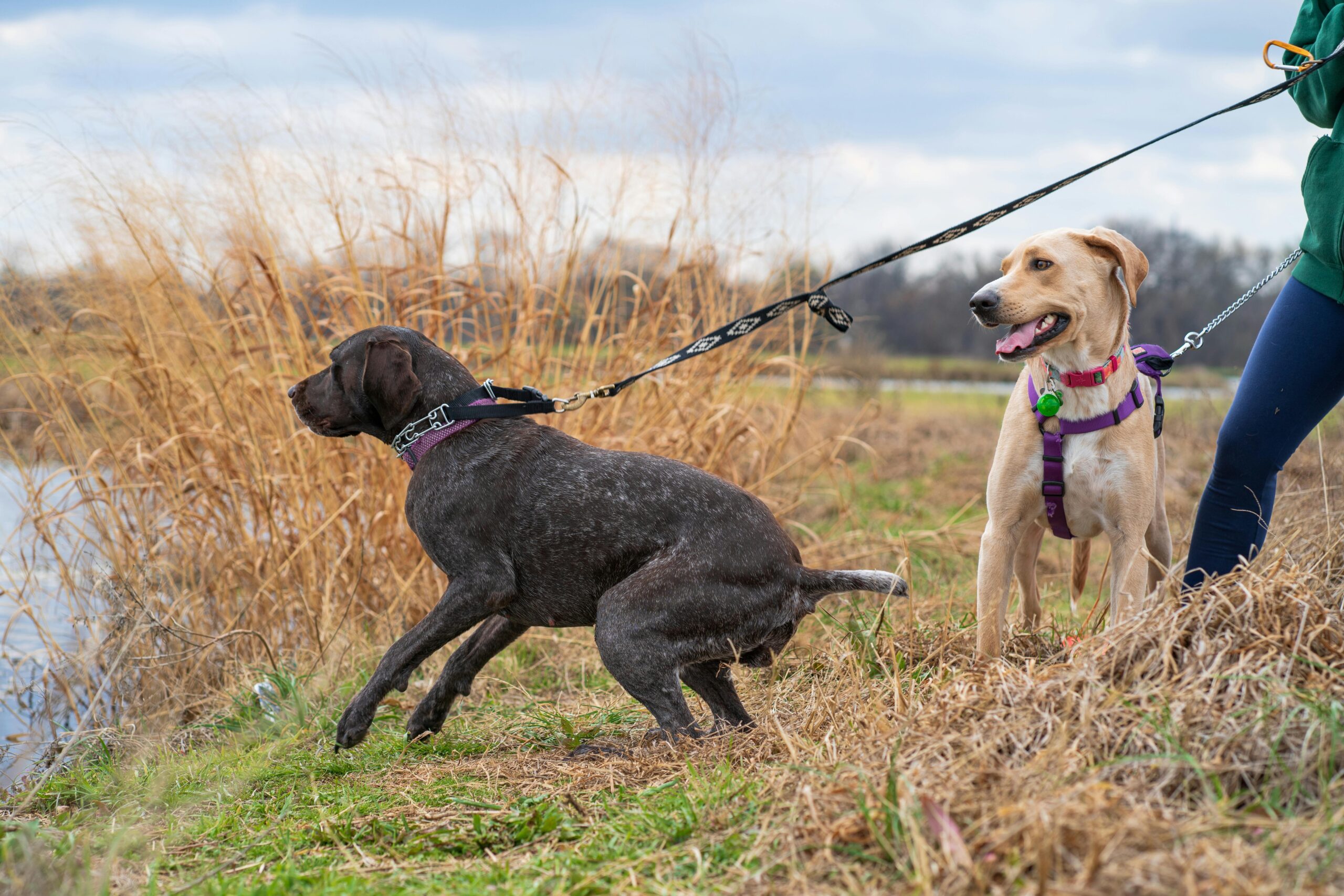Is your dog turning your peaceful walks into a tug-of-war?
If you’re tired of the constant pulling on the harness, you’re not alone.
This guide is tailored to address just that.
Join us as we explore practical solutions and unveil 11 invaluable tips on How to Stop Dog Pulling on Harness.
These insights aim to not only restore control during walks but also nurture a more enjoyable and cooperative connection with your canine companion.
From training techniques to harness selection, discover a comprehensive guide for a well-behaved and leash-friendly furry companion.
Table of Contents
Taming the Tug: 11 Tips on How to Stop Dog Pulling on Harness

1] Understanding the Pulling Instinct
Delve into the intricate workings of the canine mind to comprehend the origins of pulling behavior.
Dogs, driven by excitement, curiosity, or an innate desire to explore, may exhibit pulling tendencies on the harness during walks.
Identifying and acknowledging these instincts constitute the foundational step in devising effective training strategies.
Familiarize yourself with your dog’s body language, enabling you to anticipate triggers for pulling behavior and respond proactively during walks.
2] Proper Harness Fit
Prioritize a properly fitted harness to establish the foundation for effective control.
A snug and comfortable harness not only enhances your control over your dog but also diminishes the incentive for pulling.
Regularly check for any signs of chafing or rubbing, ensuring your dog’s comfort during walks.
Opt for a no-pull harness design, strategically crafted to discourage and minimize pulling behavior.
In the embrace of a well-fitted harness, control becomes the silent conductor of a leash dance.
3] Front-Clip Harness
Invest in a front-clip harness, strategically designed to redirect your dog’s forward momentum.
By attaching the leash to the front, the harness diminishes the effectiveness of pulling, encouraging your dog to walk alongside you.
This innovative design curtails your dog’s ability to exert full force during pulling episodes, providing a practical solution for maintaining a controlled walking experience.
4] Consistent Training Commands
Establish clear communication with your dog through consistent training commands during walks.
Teach fundamental commands such as “heel” or “walk nicely,” and consistently reward your dog for compliance.
A uniform set of commands helps your dog understand the expectations during walks, reinforcing the notion that pulling is undesirable behavior.
5] Positive Reinforcement
Deploy positive reinforcement techniques to reinforce positive leash manners.
Whether through treats, praise, or engaging toys, positive associations serve as powerful motivators for your dog to adopt leash-friendly behaviors.
Regularly reward instances of walking without pulling, fostering a positive connection between good behavior and enjoyable outcomes.
In the symphony of rewards, good leash manners become the celebrated melody.
6] Stop-and-Go Technique
Master the stop-and-go technique as a valuable tool in teaching your dog patience during walks.
When your dog pulls, bring the walk to a complete stop. Resume walking only when the leash slackens.
This method effectively communicates to your dog that pulling interrupts the walking experience, encouraging them to maintain a relaxed leash for continuous movement.
7] Change Directions
Introduce variety into your walks by randomly changing directions.
This strategic technique disrupts the anticipated pulling pattern, requiring your dog to stay attentive and responsive to your cues.
By breaking the predictability of the walk, this method discourages persistent pulling behavior and fosters a more controlled walking experience.
• Introduce variety into walks by changing directions randomly • Disrupts pulling patterns and requires your dog to stay attentive • Breaks predictability, discouraging persistent pulling behavior • Fosters a more controlled walking experience
8] Avoid Pulling Back
Adopt a counterintuitive approach by avoiding the act of pulling back against your dog’s force.
Pulling back can inadvertently trigger a heightened pulling response.
Instead, stand your ground or change directions when faced with pulling, employing a more effective and less confrontational strategy to curb pulling behavior.
9] Pre-Walk Exercise
Prioritize pre-walk exercises as a means to burn excess energy.
Engage in activities like fetch or interactive play before walks to tire your dog, reducing the likelihood of pulling due to excitement.
A pre-exercise routine promotes a calmer demeanor during walks, enhancing your ability to manage your dog’s behavior on the harness.
Tip: “Play fetch or indulge in interactive activities before walks for a more focused and relaxed canine companion.”
10] Professional Training Classes
Consider the valuable option of enrolling in professional training classes to receive expert guidance.
Certified trainers bring a wealth of knowledge to assess your dog’s specific pulling challenges and tailor personalized strategies for effective training.
Professional classes provide a structured and controlled environment for refining your dog’s behavior, offering insights and techniques to address pulling issues.
11] Be Patient and Consistent
Acknowledge the indispensable role of patience and consistency in successfully mitigating dog pulling on the harness.
Celebrate small victories along the training journey and adhere to a consistent approach.
Recognize that every dog learns at its own pace, and the establishment of good leash manners is a gradual process requiring patience, positive reinforcement, and unwavering consistency.
In the tapestry of training, patience and consistency weave the threads of successful leash manners.
How to Stop Dog Pulling on Harness: FAQs
How long does it take to stop dog pulling on the harness?
Training timelines vary, but consistent efforts can yield positive results within a few weeks. Patience is key, as every dog learns at its own pace, and the duration may depend on the dog’s age and temperament.
Can any harness stop dog pulling?
While harness design plays a role, consistent training is essential. No-pull harnesses and front-clip designs are effective tools, but their success depends on proper fitting and concurrent training efforts.
Is professional training necessary to stop dog pulling?
While dedicated owners can achieve success through consistent efforts, professional training can provide valuable insights and accelerate the learning process. Consider it an investment in your dog’s behavioral well-being, especially if you encounter persistent challenges.
Can age affect the success of stopping dog pulling?
Age can influence learning speed, but dogs of all ages can be trained to stop pulling on the harness. Consistency and patience are key factors in overcoming pulling behavior, regardless of age.

Conclusion:
Mastering the art of stopping your dog from pulling on the harness is a transformative journey that goes beyond mere leash control.
By consistently applying the 11 tips provided in this guide, you’re not just refining your dog’s walking behavior – you’re deepening the bond between you and your furry friend.
Revel in the satisfaction of stress-free walks and the joy of a well-behaved canine companion.
With these strategies, the phrase How to Stop Dog Pulling on Harness becomes a pathway to harmonious and enjoyable strolls with your beloved pet.





